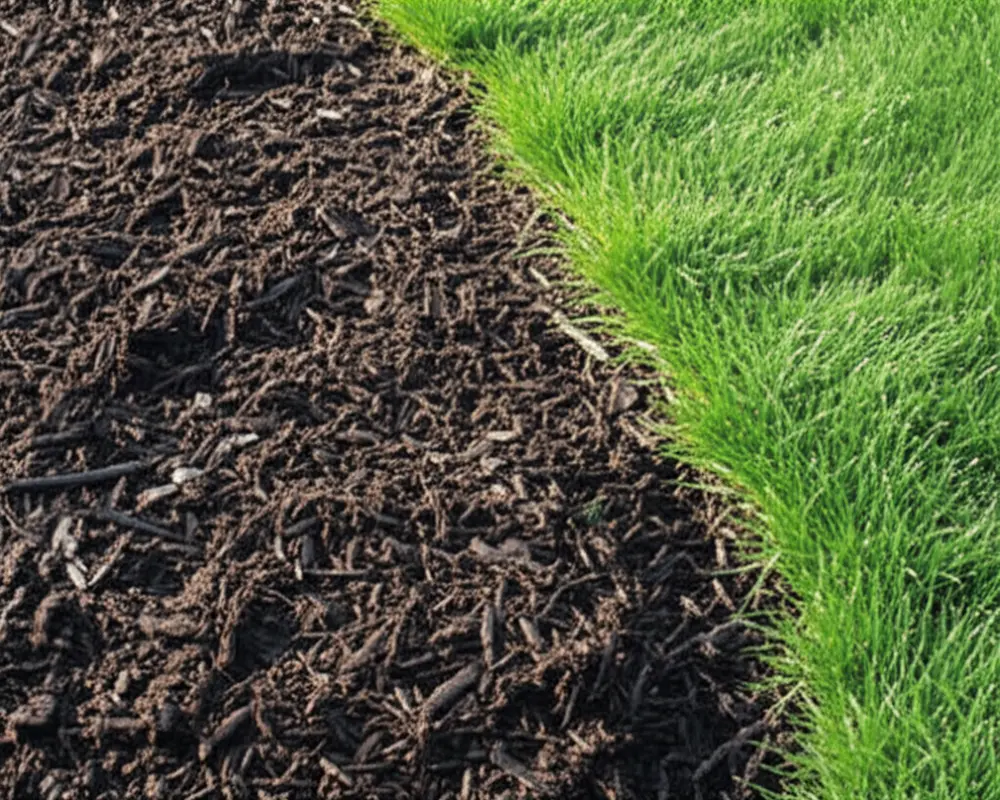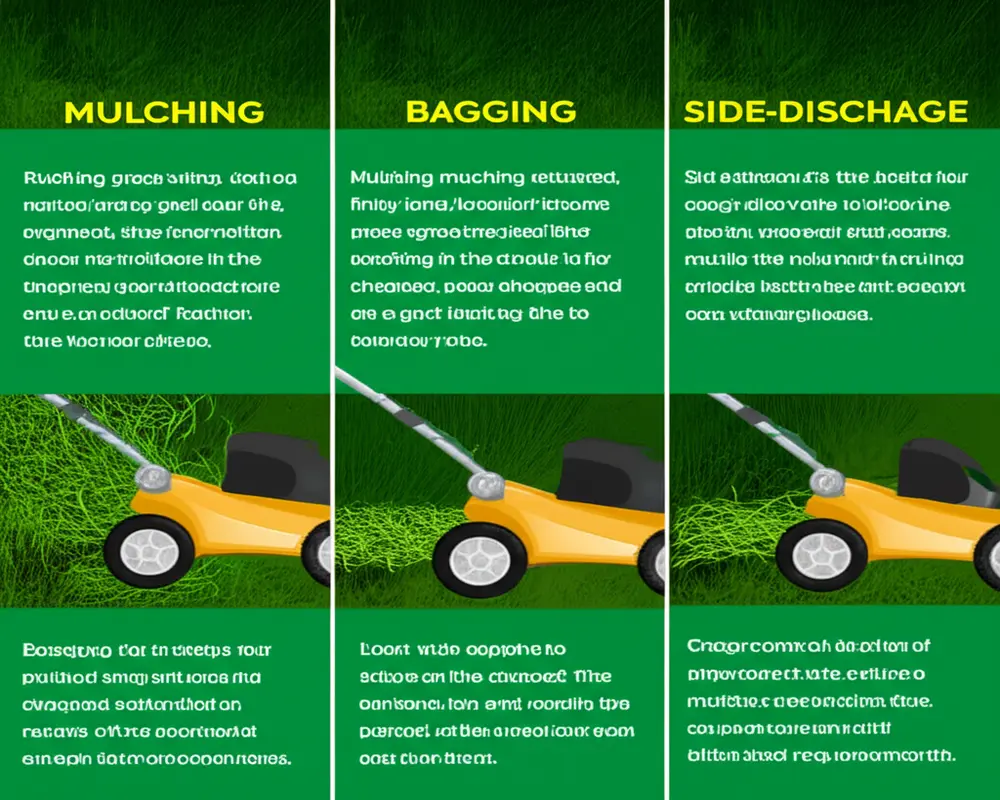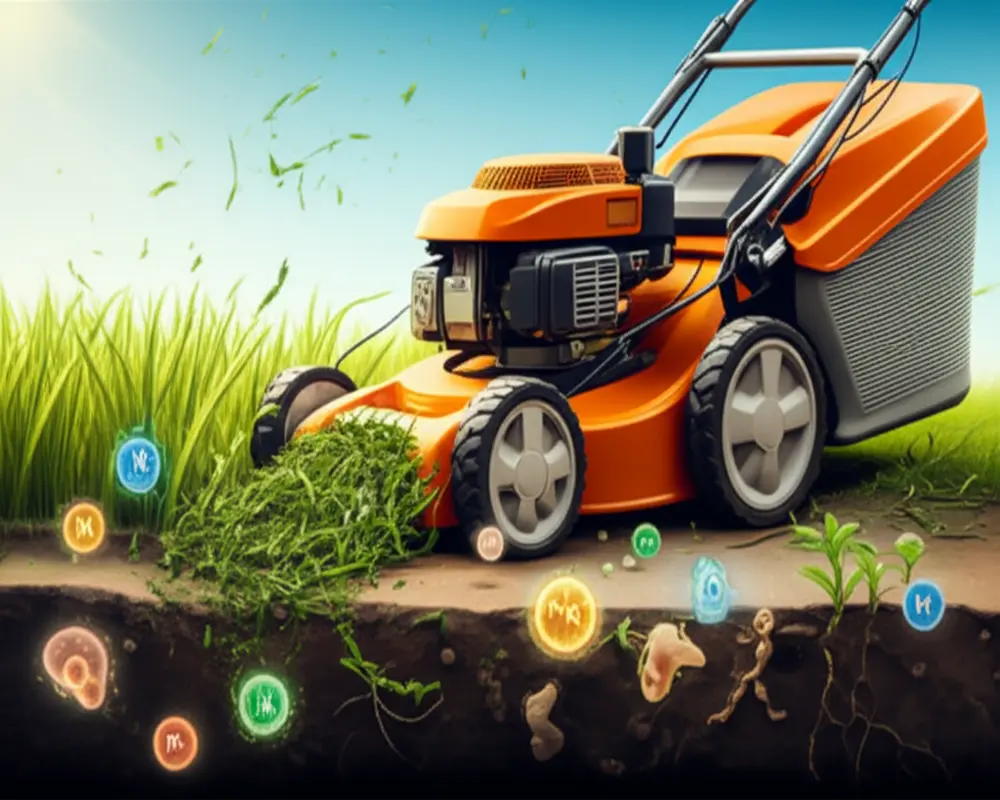Tending to your lawn often presents a familiar question: what to do with grass clippings after mowing? Rather than bagging and disposing of these clippings, lawn mower mulching benefits offer a compelling solution, turning what many consider yard waste into a valuable resource. Lawn mower mulching involves finely chopping grass clippings and redistributing them across your lawn, promoting natural growth and soil health. This technique is a straightforward, sustainable way to enhance your lawn’s vigor, save time, reduce costs, and support the environment.
Thank you for reading this post, don't forget to subscribe!By embracing mulching, homeowners can reap numerous advantages including the return of essential nutrients to the soil, improvement in soil structure, enhanced moisture retention, natural weed control, and significant effort and expense reduction. This article delves deeply into these mulching grass clippings benefits, offering expert insights on why mulching surpasses traditional bagging methods and how best to implement it in your garden care routine.
The Science Behind Mulching: How Your Lawn Transforms
Understanding the biological processes that mulching supports can clarify why it benefits your lawn so notably. Grass absorbs nutrients from soil to grow, primarily requiring nitrogen, potassium, and iron. When grasses are cut, their clippings contain about 25% of the lawn’s annual nitrogen needs along with vital micronutrients.
Mulching finely chops these clippings, allowing them to quickly decompose with the help of soil microorganisms like bacteria and fungi. This decomposition forms a natural nutrient loop where these nutrients return to the soil, replenishing it and supporting vigorous turf growth without synthetic inputs.
Core Benefits of Mulching Grass Clippings
A. Natural Fertilizer & Nutrient Return
Mulched clippings act as a natural fertilizer. Rich in nitrogen and essential minerals such as iron and potassium, these clippings supply up to 25% of your lawn’s yearly nitrogen requirements, reducing dependence on chemical fertilizers. This not only promotes greener, denser grass but also supports sustainable lawn care practices.

B. Improved Soil Health & Structure
The organic matter from decomposing clippings enhances soil composition by improving aeration and water drainage. Healthy soil structure encourages the proliferation of beneficial microbes, which bolster root development and overall turf resilience, thereby strengthening your lawn’s foundation for enduring health.
C. Enhanced Moisture Retention & Drought Resistance
By forming a light mulch layer over the soil, mulching reduces evaporation, keeping moisture near grass roots longer. This shading effect not only conserves water—critical in drought-prone areas—but also helps maintain a lush green lawn with greater tolerance for dry spells.

D. Natural Weed Suppression
The mulch layer inhibits sunlight reaching weed seeds, lowering their germination rates. This natural suppression means less need for chemical herbicides, contributing to a safer and more eco-friendly yard.
E. Time & Effort Savings
Mulching eliminates the cumbersome tasks of bagging, hauling, and disposing of grass clippings. This simple practice can save homeowners several hours over the mowing season, allowing more time to enjoy the outdoors rather than spend it on cleanup.
F. Cost Savings
With less reliance on commercial fertilizers and reduced water usage, mulching offers tangible cost reductions. Additionally, avoiding the purchase of bagging materials or waste disposal fees further lightens the financial load of lawn maintenance.
G. Environmental Friendliness & Waste Reduction
Mulching significantly decreases organic waste sent to landfills, which in turn lowers methane emissions—a potent greenhouse gas. By fostering sustainable lawn care, mulching supports broader environmental goals and reduces your overall ecological footprint.
Mulching Myths Debunked
A. Myth: Mulching Causes Thatch Buildup
Thatch results from the accumulation of dead organic matter like lignin, not actively decomposing green clippings. Research from horticulture departments at leading universities confirms that mulching with fresh clippings does not contribute to thatch problems when properly managed.
B. Myth: Mulching Spreads Weeds or Diseases
Healthy lawns generally benefit from mulching without increased risk of disease. However, it’s advisable to avoid mulching during periods of active fungal infections to prevent potential spread. Overall, mulching is a safe practice for well-maintained lawns.
Mulching vs. Bagging vs. Side-Discharge: Which is Best?
| Method | Advantages | Disadvantages |
|---|---|---|
| Mulching | Returns nutrients; saves time; improves soil health; conserves water | Requires proper mower; wet grass may clump |
| Bagging | Removes debris; good for disease or weed control | More time-consuming; nutrient loss; waste disposal needed |
| Side-Discharge | Easy and fast; no bagging required | Grass clippings left scattered; minimal nutrient return |

Among these, mulching stands out as the most beneficial for maintaining a healthy, sustainable lawn, providing a balance of efficiency and nourishment.
Tips for Effective Mulching
To maximize the benefits of mulching, use a mower specifically designed for mulching with sharp blades for fine cuts. Regular mowing is crucial; avoid removing more than one-third of the grass blade height at one time. Always mow when the grass is dry to prevent clumping, and consider multiple passes or bagging for excessively tall lawn sections. Changing mowing patterns encourages even clipping distribution, and maintaining the optimal grass height for your turf type supports overall health.
When Mulching Might Not Be Ideal
While mulching offers many advantages, it isn’t recommended for lawns afflicted with disease or fungal infections, as recirculating grass clippings may exacerbate problems. Also, avoid mulching when the grass is extremely wet or overly tall, as this can lead to clumping and poor decomposition. The first mow of the growing season or major fall cleanups might also be better handled with bagging to remove debris.
Conclusion
Mulching your grass clippings is a practical, cost-effective method for enhancing lawn health, improving soil quality, conserving water, and supporting eco-friendly gardening. By returning valuable nutrients to the soil, reducing garden waste, and saving time and money, mulching transforms lawn care into an effortless, sustainable practice. Incorporate mulching into your regular lawn maintenance routine to experience greener, stronger grass with reduced environmental impact.
For further expert gardening advice, explore our guide on hand cultivators and their benefits, an excellent tool to complement mulching and lawn care.
FAQs
Do I need a special mower for mulching?
A mulching mower with specially designed blades is ideal as it finely chops grass clippings for quick decomposition. Many modern mowers have a mulching feature, but retrofits are also possible.
Does mulching increase thatch buildup?
No. Research shows that mulched green clippings break down quickly and do not contribute to thatch, which is mainly caused by dead organic matter.
How often should I mulch?
Frequent mowing with mulching is best, ideally removing less than one-third of the grass blade length each time. This encourages even distribution and nutrient cycling.
Can I mulch grass with diseases?
It’s advisable to avoid mulching during active disease outbreaks to prevent spread. Otherwise, healthy lawns benefit from mulching without increased disease risk.
Is mulching suitable for all grass types?
Most common turf grasses respond well to mulching. However, optimal mowing height and frequency vary by species, so adjust accordingly for best results.
Authoritative references:

